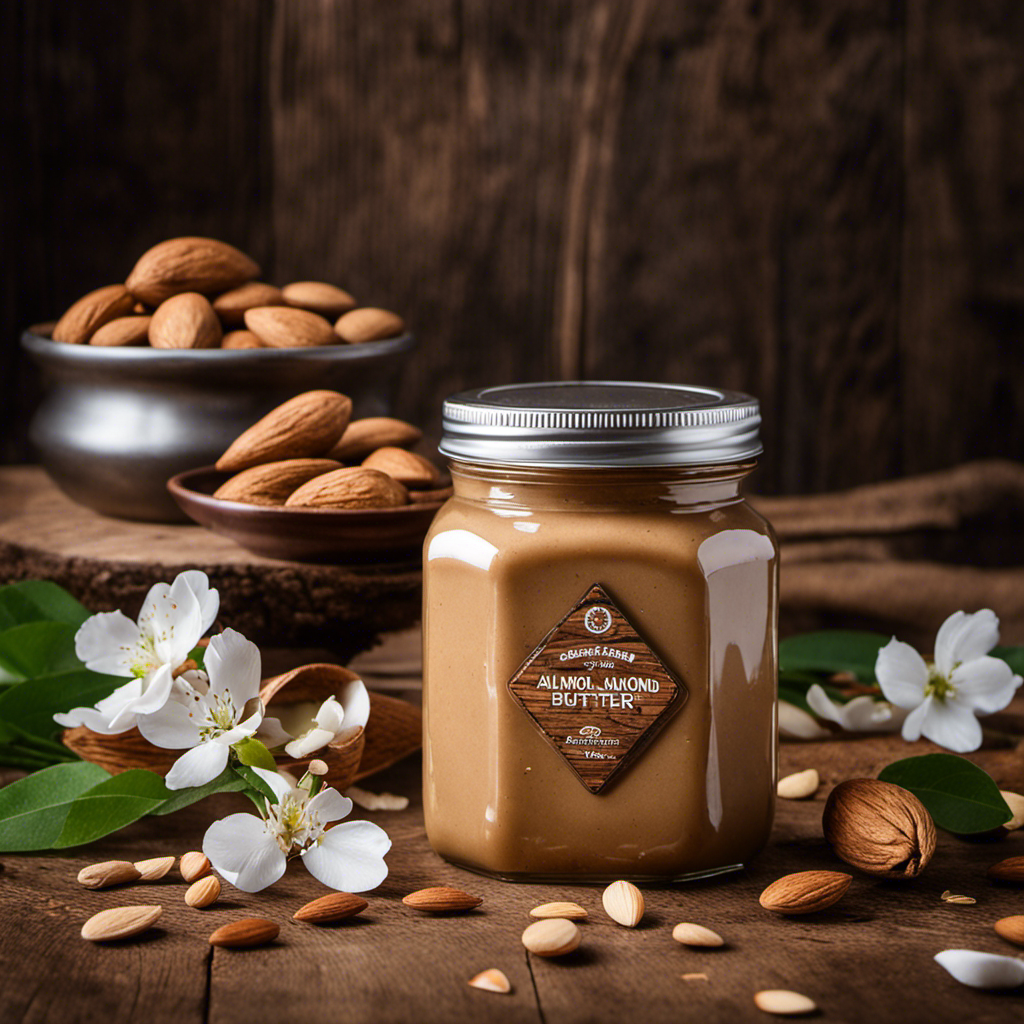I’ve always been curious about the amount of sodium hidden in the butter stick chilling in my refrigerator. Say goodbye to curiosity! In this piece, we’re going to explore where the sodium in butter comes from, the advised consumption levels, and compare the sodium levels in both salted and unsalted butter.
We’ll also explore the health effects of consuming too much sodium and offer some helpful tips on reducing sodium in butter-based dishes.
So, let’s get ready to butter up and discover the truth about sodium in our favorite spread!
Key Takeaways
- Sodium content in butter can vary depending on the brand and recipe used, with salted butter containing significantly more sodium than unsalted butter.
- High sodium intake can lead to elevated blood pressure, increased risk of heart disease and stroke, and strain on the kidneys.
- Choosing unsalted butter or low-sodium alternatives can help individuals reduce their overall sodium intake and promote heart health.
- Being mindful of sodium content in processed foods and condiments, and opting for lower sodium options, can also contribute to reducing sodium intake.
Sources of Sodium in Butter
One of the main sources of sodium in butter is salt. Salt is commonly used in the production of butter to enhance its flavor and increase its shelf life. However, it is important to note that not all butter contains the same amount of sodium. The sodium content can vary depending on the brand and the specific recipe used.
Apart from salt, some other sources of sodium in butter can include additives and preservatives. These additives are often used to improve the texture and stability of the butter.
If you are looking for lower sodium alternatives, there are options available. Some brands offer unsalted butter, which contains little to no sodium. Additionally, there are also plant-based spreads and margarines that are specifically formulated to be low in sodium.
Recommended Sodium Intake
The recommended intake for sodium is typically around 2,300 milligrams per day. Maintaining a balanced sodium intake is crucial for overall health and well-being. Here are three reasons why it is important to be mindful of your sodium consumption:
-
Blood pressure regulation: High sodium intake can lead to elevated blood pressure levels, increasing the risk of heart disease and stroke. By following recommended sodium intake guidelines, you can help keep your blood pressure in check.
-
Kidney function: Excess sodium can put strain on the kidneys, potentially leading to kidney damage or decreased function. By limiting sodium intake, you can support the optimal functioning of these vital organs.
-
Fluid balance: Sodium plays a key role in maintaining proper fluid balance in the body. Consuming too much sodium can disrupt this balance, leading to water retention and bloating.
Being aware of the recommended sodium intake and its health implications is an important step towards maintaining a healthy lifestyle.
Sodium Content in Salted Butter
When it comes to discussing the sodium content in butter, one of the key points to consider is the difference between salted and unsalted varieties.
Salted butter contains added salt, which significantly increases its sodium content. This can have implications for individuals who need to monitor their sodium intake for health reasons.
However, for those looking for lower sodium alternatives, there are unsalted butter options available that offer a reduced sodium content.
Salted Vs Unsalted
You can easily differentiate between salted and unsalted butter by checking the sodium content. Here are three key points to consider when comparing the sodium content in butter and other dairy products as well as processed foods:
-
Sodium content in other dairy products: Butter contains a relatively low amount of sodium, but other dairy products like cheese and yogurt can have higher sodium levels due to the production process and added ingredients. It’s important to read the labels and choose low-sodium options when possible.
-
Sodium content in processed foods: Processed foods often contain hidden sodium, and butter used in processed foods can contribute to the overall sodium content. This is why it’s crucial to be mindful of the sodium content in processed foods and make healthier choices whenever possible.
-
Sodium health implications: Excessive sodium intake can lead to high blood pressure and increase the risk of heart disease and stroke. By being aware of the sodium content in butter and other dairy products, as well as processed foods, we can make informed decisions to protect our health.
Transition: Now that we understand the differences in sodium content, let’s explore the health implications of consuming high amounts of sodium.
Sodium Health Implications
Excessive intake of sodium can lead to health issues such as high blood pressure and an increased risk of heart disease and stroke. Sodium plays a crucial role in maintaining fluid balance and transmitting nerve impulses, but consuming too much can have detrimental effects on our health.
High levels of sodium in the diet have been strongly associated with elevated blood pressure, which is a major risk factor for heart disease. This occurs because sodium attracts and retains water, which increases blood volume and puts extra strain on the blood vessels. Over time, this can lead to the development of hypertension and contribute to the development of cardiovascular diseases.
It is important to be mindful of our sodium intake and choose low-sodium options to protect our heart health.
Lower Sodium Alternatives?
When it comes to finding lower sodium alternatives to butter, one option to consider is lower sodium spreads. These spreads are typically made from a combination of oils and water, which helps to reduce the overall sodium content. Here are three reasons why lower sodium spreads can be a good choice:
-
Reduced sodium content: Lower sodium spreads are specifically formulated to have less sodium than traditional butter. This can be beneficial for individuals who are looking to reduce their sodium intake for health reasons.
-
Versatility: Lower sodium spreads can be used in a variety of ways, just like butter. They can be spread on toast, used in baking, or melted on vegetables. This versatility makes them a convenient option for those who want to limit their sodium intake without sacrificing flavor.
-
Heart health benefits: By choosing lower sodium spreads, you can also potentially reduce your risk of heart disease. High sodium intake has been linked to high blood pressure, which is a risk factor for heart disease. Opting for lower sodium spreads can help lower your overall sodium intake and promote heart health.
Overall, lower sodium spreads can be a great alternative to butter for individuals looking to lower their sodium intake.
Sodium Content in Unsalted Butter
If you’re looking to reduce your sodium intake, unsalted butter is a great option. While regular butter contains a small amount of sodium, unsalted butter is virtually sodium-free. This makes it a healthier choice for individuals who need to watch their sodium intake, especially for those with high blood pressure or heart conditions.
To help you better understand the sodium content in different types of butter, here’s a comparison table:
| Type of Butter | Sodium Content |
|---|---|
| Unsalted Butter | 0mg |
| Salted Butter | 90mg |
| Margarine | Varies |
| Light Margarine | Varies |
As you can see, unsalted butter has the lowest sodium content compared to salted butter and margarine. Excessive sodium intake can have negative impacts on heart health, such as increasing blood pressure and contributing to the development of cardiovascular diseases. By choosing unsalted butter, you can enjoy the rich taste of butter while minimizing your sodium intake.
Health Effects of High Sodium Intake
High sodium intake can have serious risks for our health. Consuming too much sodium has been linked to an increased risk of high blood pressure, heart disease, and stroke.
To reduce our sodium intake, it’s important to be mindful of the amount of sodium in the foods we eat and to choose low-sodium options whenever possible.
Risks of High Sodium
The risks of consuming too much sodium are well-known. As an individual who has studied nutrition extensively, I can confidently list three significant health effects of high sodium intake:
-
Increased blood pressure: High sodium levels can cause water retention, leading to increased blood volume and higher blood pressure. This can strain the cardiovascular system and increase the risk of heart disease and stroke.
-
Kidney damage: Excessive sodium intake puts extra pressure on the kidneys, which are responsible for filtering waste from the blood. Over time, this can lead to kidney damage or dysfunction.
-
Bone health issues: Studies have shown a link between high sodium intake and decreased bone density. Excessive sodium can cause the body to excrete more calcium, an essential mineral for bone health, leading to weakened bones and an increased risk of osteoporosis.
It is crucial to be mindful of our sodium consumption and strive for a balanced diet to mitigate these risks.
Reducing Sodium Intake
In my previous subtopic, I discussed the risks of consuming high amounts of sodium. Now, let’s delve into how we can reduce our sodium intake. One effective way is to be aware of the sodium content in processed foods and condiments. These products often contain high levels of sodium, even if they don’t taste salty. To make informed choices, it’s helpful to check the nutrition labels and choose lower sodium options. Additionally, cooking meals from scratch allows us to control the amount of sodium we add.
Here is a table showcasing the sodium content in common processed foods and condiments:
| Food/Condiment | Sodium Content (per serving) | Recommended Daily Limit |
|---|---|---|
| Canned Soup | 800 mg | 2300 mg |
| Frozen Pizza | 900 mg | 2300 mg |
| Ketchup | 150 mg | 2300 mg |
| Soy Sauce | 1000 mg | 2300 mg |
Tips for Reducing Sodium in Butter-Based Dishes
One way to lower sodium content in dishes made with butter is by using low-sodium alternatives. Here are three tips for reducing sodium in butter-based dishes:
-
Choose unsalted butter: Regular butter contains salt, which adds to the overall sodium content. By opting for unsalted butter, you can control the amount of sodium in your dish.
-
Use herbs and spices: Instead of relying on salt for flavor, experiment with different herbs and spices to enhance the taste of your dishes. Garlic, onion powder, oregano, and paprika are just a few examples of flavorful alternatives.
-
Try alternative spreads: If you’re looking for a healthier option, consider using spreads like olive oil or avocado instead of butter. These alternatives offer a lower sodium content while still providing a rich and creamy texture.
Reducing sodium intake has several health benefits, including lowering blood pressure and decreasing the risk of heart disease. By implementing these tips, you can enjoy delicious butter-based dishes without compromising your health.
Frequently Asked Questions
Can the Sodium Content in Butter Vary Depending on the Brand or Type?
Yes, the sodium content in butter can vary depending on the brand or type. Different brands may use different amounts of salt in their butter, resulting in varying sodium levels.
Are There Any Health Benefits Associated With Consuming Sodium in Butter?
Consuming sodium in butter can have potential risks if consumed excessively. Excessive sodium intake is linked to high blood pressure, which increases the risk of heart disease. It’s important to be mindful of sodium levels in our diets.
How Does the Sodium Content in Butter Compare to Other Common Sources of Sodium in Our Diet?
When comparing the sodium content in butter to other common sources of sodium in our diet, it’s important to note that processed foods generally contribute more sodium to our daily intake than butter does.
Can the Sodium Content in Butter Change if It Is Cooked or Heated?
When you cook or heat butter, the sodium content does not change. The relationship between heating and sodium levels in butter remains the same.
Are There Any Alternatives to Butter That Have Lower Sodium Content?
There are low sodium spreads and sodium-free butter options available as alternatives to butter. These can be used in cooking and baking to reduce sodium intake without compromising flavor.
Conclusion
After investigating the sodium content in butter, it’s clear that butter does contain sodium. Both salted and unsalted butter have varying levels of sodium, with salted butter generally containing more.
It’s important to be mindful of our sodium intake, as excessive sodium consumption can have negative health effects. To reduce sodium in butter-based dishes, one can opt for unsalted butter or use alternative seasonings.
Moderation and awareness are key when it comes to maintaining a healthy diet.









